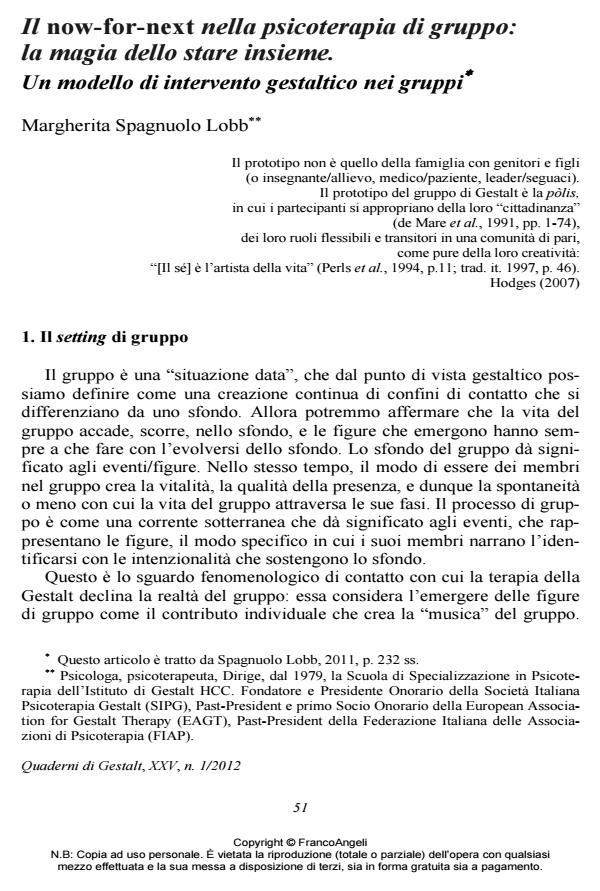The "Now-for-Next"!in Group Therapy: The magic of being together. A model of group therapy
Journal title QUADERNI DI GESTALT
Author/s Margherita Spagnuolo Lobb
Publishing Year 2012 Issue 2012/1
Language Italian Pages 12 P. 51-62 File size 372 KB
DOI 10.3280/GEST2012-001006
DOI is like a bar code for intellectual property: to have more infomation
click here
Below, you can see the article first page
If you want to buy this article in PDF format, you can do it, following the instructions to buy download credits

FrancoAngeli is member of Publishers International Linking Association, Inc (PILA), a not-for-profit association which run the CrossRef service enabling links to and from online scholarly content.
Relying on Kurt Lewin’s defintion of groups, and on Goodman’s concept of freely fluctuating leadership as a natural function of groups, the author describes a new model for group diagnosis and therapy. Basic principles of this model are the aesthetics of contact and the development of intentionalities for contact among group members. Synchronic and diachronic criteria are described. Synchronic criteria allow the aesthetic observation of groups in the here and now (that is, the vital presence of each member, the flexibility of spontaneous group leadership, the capacity to accept the novelty and diversity of group members). Diachronic criteria give the therapist a sense of the developmental meaning of what group members say or feel (five stages of becoming a group and separating from it). Given the coherence of this model with Gestalt therapy’s epistemology, it can be easily used in training programs and applied to relevant contexts such as organizational consulting.
Keywords: Leadership, group therapy, esthetics of contact, group phases, group consulting.
- Le ‘maintenant-pour-l’ensuite’ Margherita Spagnuolo Lobb, Joseph Caccamo, in Cahiers de Gestalt-thérapie /2018 pp.58
DOI: 10.3917/cges.039.0058
Margherita Spagnuolo Lobb, Il now-for-next nella psicoterapia di gruppo: la magia dello stare insieme. Un modello di intervento gestaltico nei gruppi in "QUADERNI DI GESTALT" 1/2012, pp 51-62, DOI: 10.3280/GEST2012-001006